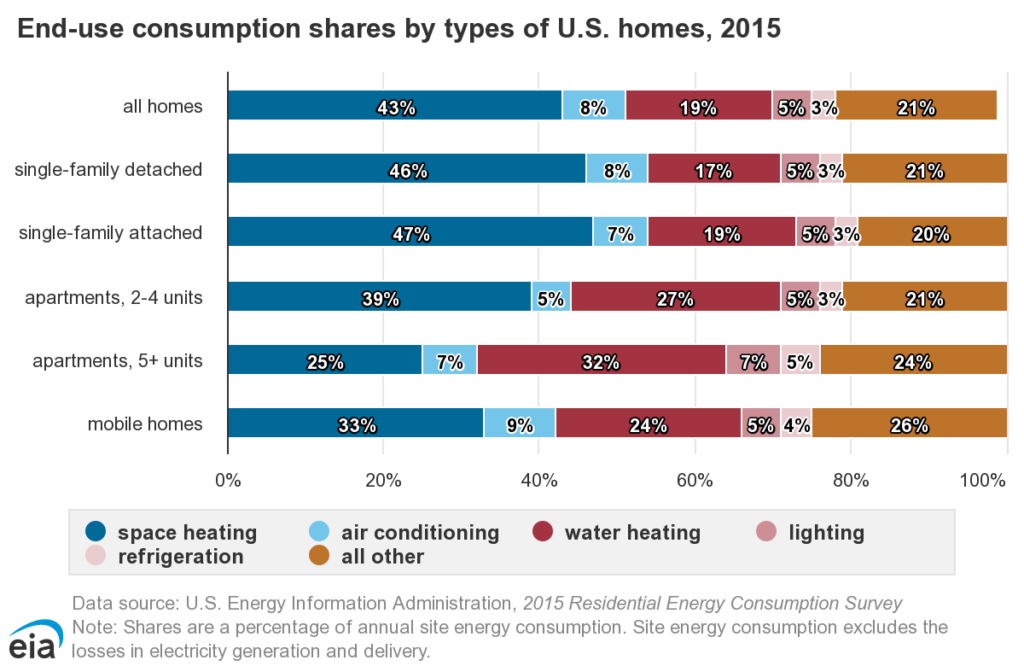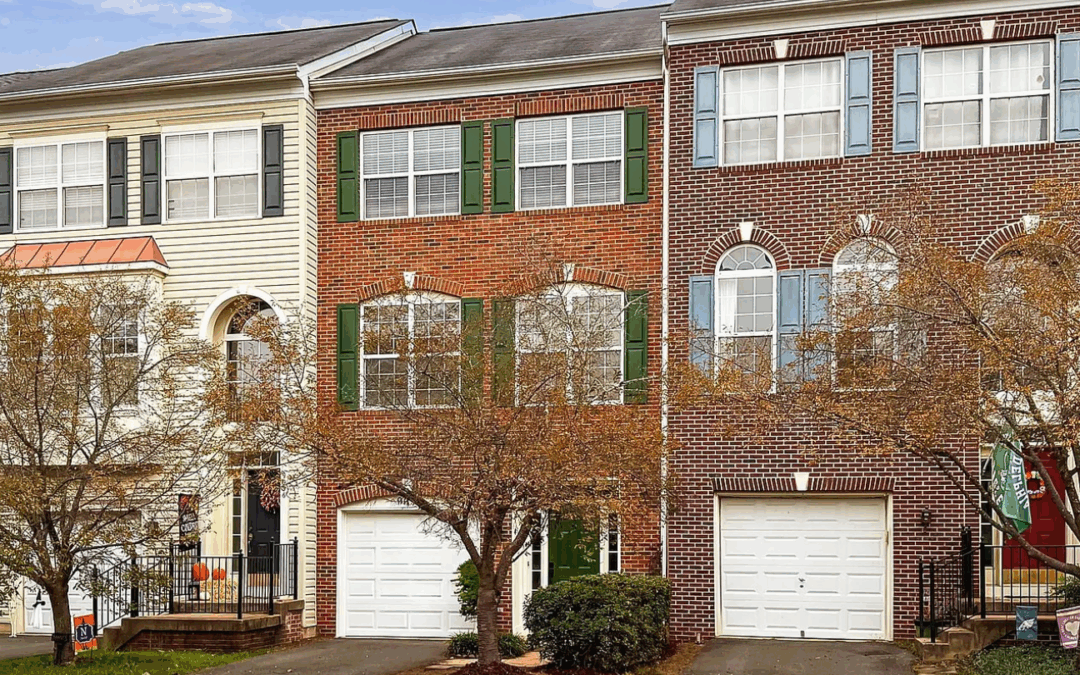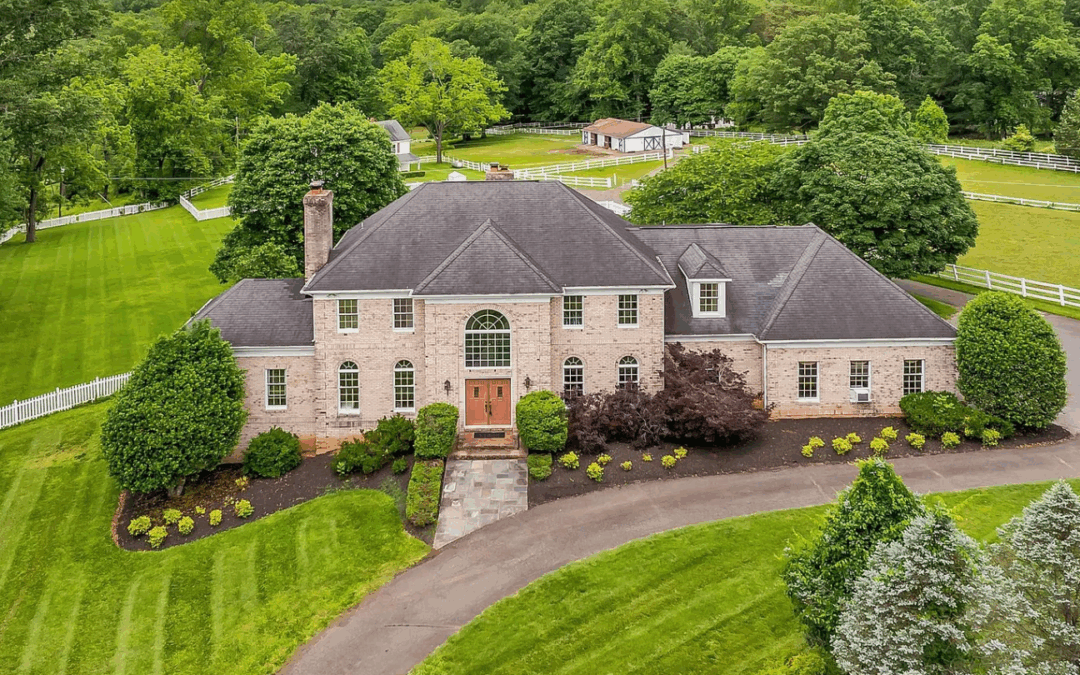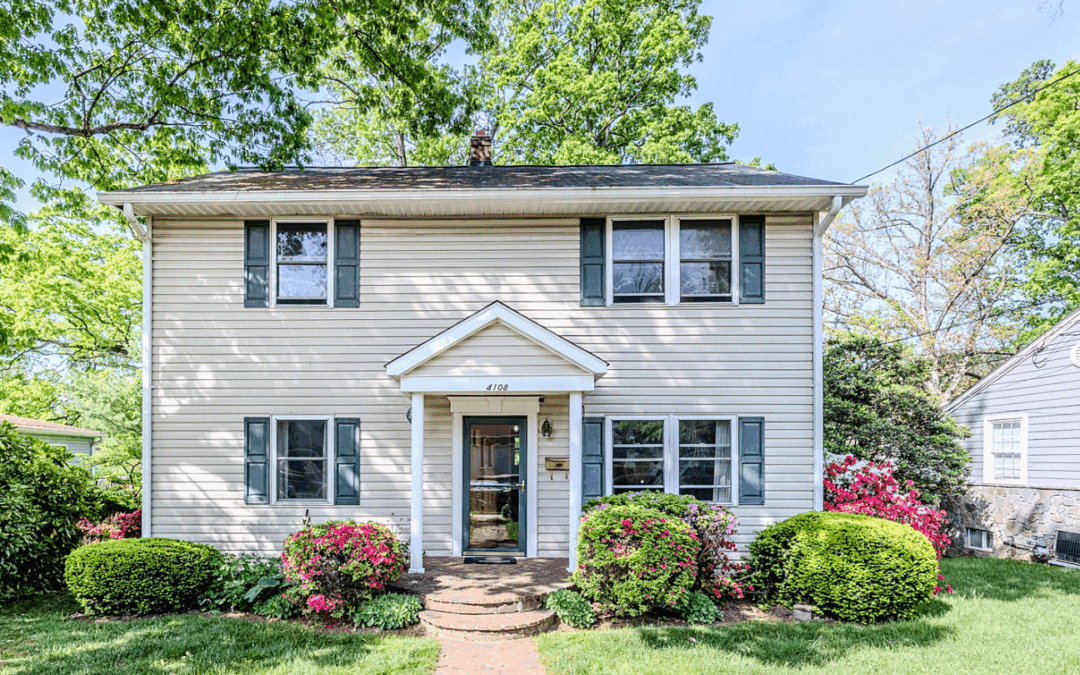10 Energy-Efficient Home Upgrades
Whether you’re planning on selling your home or simply looking to save on your utility bill, here are 10 energy-efficient home upgrades to help you optimize your home’s energy consumption.
Conduct an Energy Audit of Your Home
Before making any upgrades, it’s a good idea to conduct an energy audit to gain insight into your home’s energy consumption and, more specifically, where energy is being wasted. A professional energy audit will “typically include an inspection of a home’s insulation, heating and cooling systems, appliances, lights, windows, and other components that affect the amount of energy used (and wasted),” according to Bob Vila.
Homeowners can expect to pay $415 on average for an energy audit in the U.S, ranging anywhere from $208 to $675. While it is possible to conduct an energy audit yourself, a professional home energy assessment is the best way to understand how your home is consuming energy.
10 Energy-Efficient Home Upgrades
After completing an energy audit, either yourself or via a professional, you’ll have a better idea of where you should start making improvements. Here are 10 energy-efficient home upgrades for you to consider based on the results of your audit. Some are simpler and can be done yourself while others will require a professional. All of these options, however, will undoubtedly help to improve your home’s energy consumption, regardless of simplicity!
1. Seal Air Leaks
Sealing air leaks around doors, windows, fireplaces, and any other place air may escape or enter your home is one of the simplest and cheapest ways to improve your home’s energy usage. Not only will sealing air leaks with caulk, spray foam, or weather stripping help you to save, it’ll also reduce drafts, making your home more comfortable for you and your family.
2. Add Insulation
Adding insulation to your attic, basement, and any crawl spaces is another fast and simple way to reduce your bill and improve the quality of your living space, keeping your home cool in the Summer and warm in the Winter.
3. Inspect & Seal Ducts
Did you know a typical home loses around 20–30% of its conditioned air due to leaks, holes, and poorly connected ducts? Seriously! Along with sealing air leaks and adding insulation, ensuring your ducts are properly connected, sealed, and free of holes will not only help you to save on your utility bill but also improve the comfortability of your home.
4. Install Solar Panels
Installing solar panels is a great way to improve your home’s energy usage as solar panels allow you to generate your own energy, reducing the amount you pay to utility companies.
5. Use Energy-Efficient Light Bulbs
By utilizing energy-efficient light bulbs, homeowners can expect to use up to 90% less energy than they would using standard light bulbs, according to Energy Star. Furthermore, energy-efficient light bulbs last up to 15 times longer and produce 70–90% less heat than traditional bulbs.
When shopping for lighting options, be sure to look for Energy Star certified products. “Earning the Energy Star certification means the product meets strict energy efficiency guidelines set by the US Environmental Protection Agency.”
6. Upgrade Appliances & Electronics
Upgrading your appliances to Energy Star certified products is another simple way to reduce your home’s energy consumption. For example, Energy Star certified refrigerators are “[15%] more energy-efficient than the minimum federal standard for refrigerators” and “[use] less energy than a 60-watt light bulb.” Take a look at some of the benefits from using other Energy Star certified appliances.
7. Install a Programmable Thermostat
According to the U.S. Department of Energy, installing a programmable thermostat “can save [homeowners] as much as 10% a year on heating and cooling” by regulating your home’s temperature, depending on if you’re home, away, or asleep. Consumer Reports also backs this up!
8. Install Energy-Efficient Windows & Doors
Installing energy-efficient windows and doors is yet another way to optimize your home’s energy usage. Like with the previously mentioned products, it’s important to look for the Energy Star certified windows and doors as this label comes with certain benefits!
9. Install an Energy-Efficient Hot Water Heater
While this upgrade will likely require a professional, swapping out your old hot water heater for an energy-efficient one is one of the best ways to improve your home’s energy usage. Water heating is one of the largest energy expenses for homeowners, accounting for 19% of consumption on average, so making this change is sure to save homeowners on their monthly bill.
Take a look at the 2015 chart below from the Energy Information Administration (the latest year data was available), highlighting the breakdown.
10. Tune Up or Upgrade Heating and Cooling Systems
Even more consuming than water heating are space heating and cooling! When these systems are upgraded in combination with other improvements, like adding proper insulation, sealing leaks, and installing a programmable thermostat, the savings can be huge!
Pros of Energy-Efficient Upgrades
While many of the benefits were mentioned throughout, the pros of making any of these energy-efficient home upgrades are too great to not explicitly call out!
Save Money on Bills
Although some energy-efficient home upgrades may be a bit costly upfront, they’re sure to save you down the line! According to the U.S. Department of Energy, consumers can save anywhere from 5–30% on their bills by making home energy upgrades.
The average utility bill for a U.S. household is around $3552 per year, not including phone and internet. Take a look at the breakdown:
- Electricity: $1452 (U.S. Energy Information Association, 2021)
- Gas: $761 (American Gas Association, 2021)
- Water: $545 (Statista, 2022)
- Wastewater: $794 (Statista, 2022)
That means homeowners could save anywhere from $178 to upwards of $1066 per year by making some of these changes!
Receive Tax Breaks
Certain home energy upgrades, like installing solar panels, can make you eligible for significant tax breaks. Homeowners who installed solar panels in 2020 and 2021 are eligible for a 26% tax credit while those who installed in 2022 and 2023 are eligible for a 30% tax credit. Additionally, there’s no maximum amount that can be claimed!
Other upgrades that can make you eligible for tax breaks include adding insulation, replacing doors windows with energy-efficient ones, upgrading heating and cooling systems, and replacing water heaters.
Improve Market Potential
According to a 2021 Zillow Report, 67% of home buyers were looking for energy upgrades when searching for their next home, viewing these upgrades as very important in their decision making. Furthermore, some upgrades, like installing solar panels, can translate to escalated listings; another 2019 Zillow Report stated that homes with solar panels sold for about 4.1% more than comparable homes without solar panels on average.
If you’re planning on putting your home on the market, making some of these energy-efficient home upgrades can greatly improve your home’s marketability!
Improve Comfortability
Beyond the monetary benefits, making some of these upgrades can drastically improve the comfort of your home by reducing drafts and regulating temperatures, creating a better environment for you and your family.
The Bottom Line
No matter if you’re looking to save on bills, improve your quality of living, or prepare your home for the market, making any of these 10 energy-efficient home upgrades is a great step toward your goals!




